What is Hand Poured Silver?

At a Glance:
-
- Hand pouring is one method used to create silver bars and rounds.
- To create these products, dealers pour molten silver into a one-sided mold.
- Hand poured silver items feature a rustic, unique appearance compared to cast silver.
What is Hand Poured Silver?
Refiners use several different methods to create silver bars and rounds, including hand pouring.
What is hand poured silver? Hand poured silver products are made by pouring molten liquid silver into a premade mold. Unlike cast silver, hand poured silver is poured into a cast without a design on only one side.
Hand pouring results in unique products with a rustic, imperfect look. The two-sided molds used to produce cast silver bars and rounds gives them a polished, sleek appearance. Hand poured bullion looks different because hand pouring doesn’t involve completely enclosing the molten metal in the mold.
So what is hand poured silver – and should you be adding it to your silver stack? We’ve got all the details in today’s Hero Bullion guide.
How is Hand Poured Silver Made?
Before silver can be molded into stunning bars or rounds, it needs to be melted down. Silver bars and rounds are made by heating silver to a high enough temperature to turn it into a thick liquid. Most refiners use a crucible, a specialized heat-resistant container, to melt silver prior to the pouring process.
Once silver has been melted down into a liquid, it can be molded into a variety of different items – including silver bars and rounds. Refiners create hand poured silver by pouring the molten silver into a mold that is open on one side. The design on the mold gives the round or bar its obverse face design, while the exposed half allows it to cool enough to be cleaned.
Hand Poured Versus Cast Silver
The process for casting silver starts the same way. Silver is melted into until it’s a liquid using a crucible. To make cast silver, dealers then fully enclose the liquid inside of a mold with their desired designs. Applying pressure to the mold puts designs on both sides and results in a smoother, sleeker finish.
That’s the main difference between poured and cast silver. Cast silver is liquified and enclosed on both sides by a mold, but hand poured silver is poured into a one-sided mold.
It might not seem like a big difference, but the two silver manufacturing processes result in visually distinct bars and rounds.
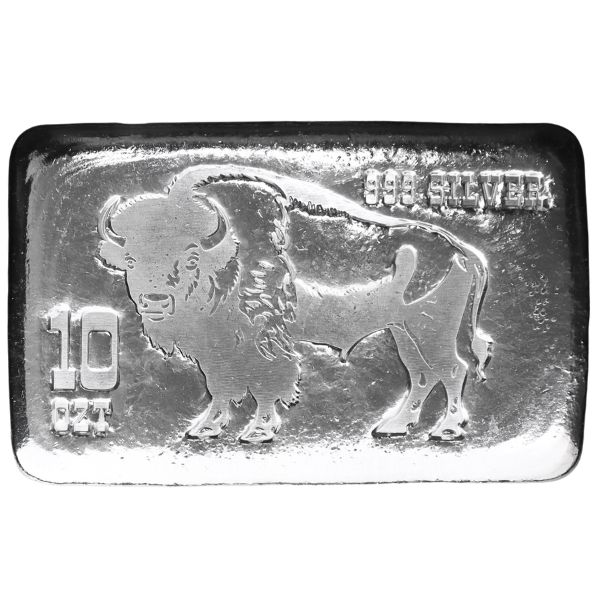
Is Hand Poured Silver or Cast Silver Better?
Hand poured silver isn’t necessarily better or worse than cast silver. The better type of silver depends entirely on investor preference. Cast silver usually offers a more refined, clean appearance, but hand poured silver comes with a rustic, unique look that some investors find irresistible.
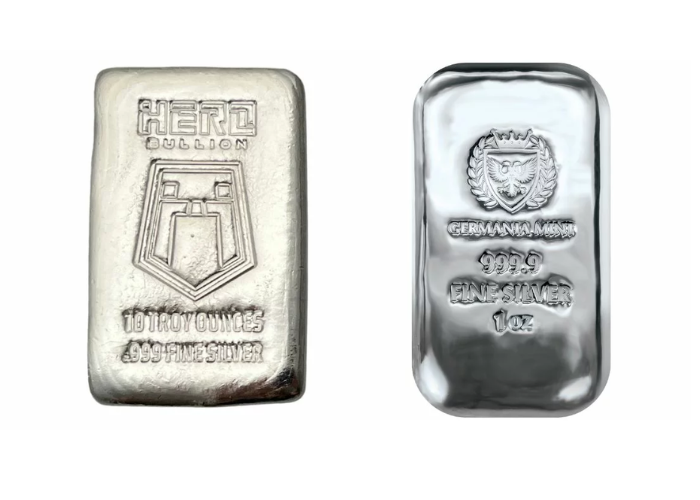
Hand poured and cast silver products are generally minted with the same fineness of silver. Both methods of making silver bars and rounds also result in beautiful, collectable silver bullion that can be fun and rewarding to stack.
Trying to choose between hand poured and cast silver? Since both types of silver use pure silver and feature beautiful designs, deciding between them mostly has to do with visual preferences. Here’s a brief overview of the differences between hand poured and cast silver:
| Hand Poured Silver | Cast Silver |
|---|---|
| Rustic, Unique Appearance | Cleaner, More Refined Look |
| Limited Availability | Very Easy to Find |
| No Two Pours Alike | Generally Very Uniform |
| Highly Pure Silver | Highly Pure Silver |
Pros and Cons to Investing in Hand Poured Silver
Our hand poured silver bars and rounds are popular for a reason. More accurately, they’re popular for several reasons. Investors love the antique look, unique appearance, and pure silver content of hand poured silver.
Not all stackers prefer hand poured silver. Some investors feel that the inconsistent finish and limited availability of hand poured silver are major drawbacks.
Let’s take a look at the pros and cons of investing in hand poured silver below.
Why Buy Hand Poured Silver?
There are three main reasons why investors love buying hand poured silver bars and rounds. The main advantages of investing in hand poured silver include its rustic, antique look and feel, unique appearance, and pure silver content.
Rustic, Antique Look and Feel
A rustic, antique look and feel characterizes hand poured silver. This is a result of how hand poured silver is manufactured. Since hand poured silver isn’t surrounded on both sides by a mold, these products look quite a bit different than cast silver.
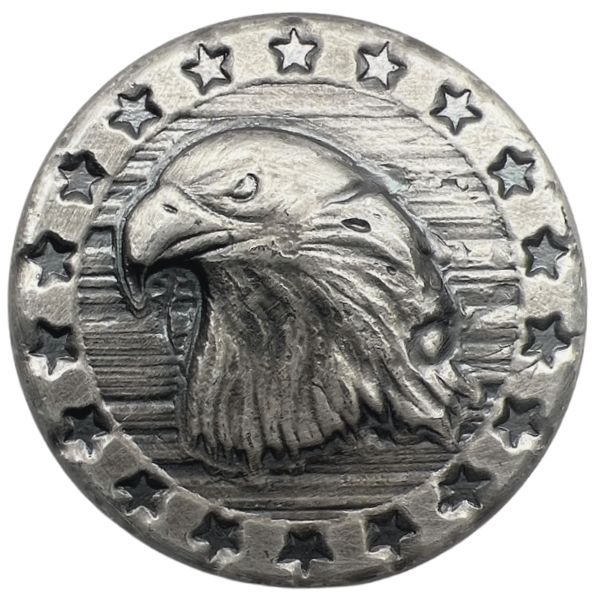
Pour lines, air bubbles, and a variety of different textures give hand poured silver a uniquely rustic look and feel. In a sense, it’s clear from looking at a hand poured bar that it was specially crafted by hand.
The unique look of hand poured silver isn’t for everyone. Some investors prefer the refined, clean aesthetic of cast silver bars or rounds. Nevertheless, the antique and rustic appearance of hand poured silver makes it a favorite for many stackers.
Unique Appearance
The hand pouring process makes every bar one-of-a-kind. Because hand pouring involves allowing exposed silver to rapidly cool, no two bars or rounds are exactly alike. Good refiners introduce some degree of uniformity to their silver bars, even if they’re hand poured. However, it’s impossible to make every bar look exactly the same during the hand pouring process.
Most hand poured product lines will include the same obverse design on every specimen. The presence of pour lines, air bubbles, and minor imperfections will vary from bar to bar, though. This one-of-a-kind appearance adds to the uniqueness of hand poured silver bars and rounds.
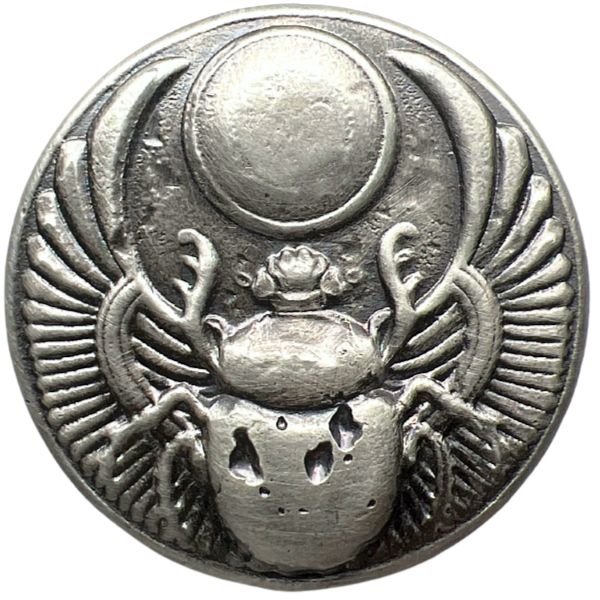
Investors who prefer hand poured silver appreciate knowing that their investments are completely new and specially made for them.
Pure Silver Bullion
Pure silver is the biggest reason why people by hand poured silver. Both cast and hand poured silver products feature pure silver – generally 99.9%. Some investors are worried that the purity of their silver decreases as a result of the hand pouring process. This is a misconception. Hand poured silver bars and rounds still include high purity silver bullion.
Air bubbles may be present in a hand poured silver bar or round, but the amount and purity of the silver each product contains should be the same as you’d find in cast silver.
Cons to Buying Hand Poured Silver
Hand poured silver is a popular method of investing, but it certainly isn’t the perfect way to stack. There are two potential downsides to buying hand poured silver that investors should understand: an inconsistent finish and limited availability.
Inconsistent Finish
Hand poured silver products aren’t as consistent as cast silver. This is an advantage for some investors, but a downside for others. Investors who appreciate the sleek, highly detailed look of classic silver bars should avoid hand poured silver.
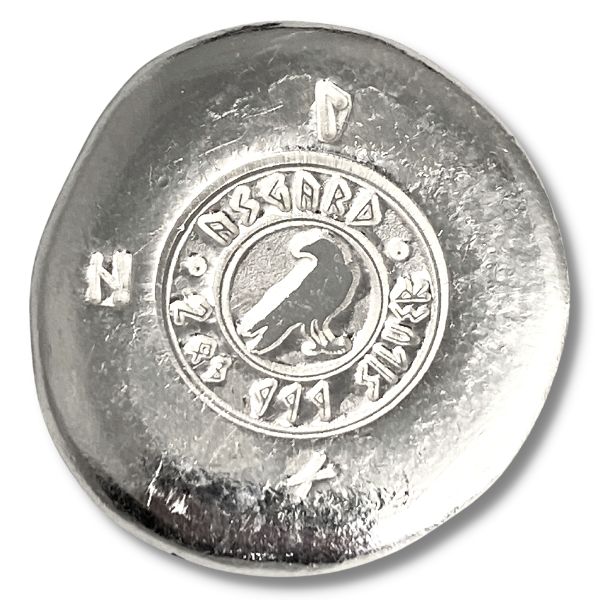
Cast silver bars are made by enclosing molten silver on both sides with a mold. The pressure applied to a cast silver bar mold results in remarkably consistent and refined appearance. Hand poured silver doesn’t offer this same consistency. Instead, each hand poured silver bar or round looks visually unique.
Limited Availability
A disadvantage to buying hand poured silver is limited availability.
Cast silver is by far the most common method used to produce silver rounds and bars. Mints and refiners all around the world offer hundreds of different cast silver products. Hand poured silver is also pretty popular, but not as many mints use this process to create their silver items.
Hand poured silver products are marked by a limited selection. The hand pouring process requires a personal touch, so most refiners can’t put out thousands of hand poured products at one time. While this results in lower mintages and (sometimes) excellent collectability, it also limits how many products investors have to choose from.
Should You be Buying Hand Poured Silver?
Hand pouring and casting silver are two distinct processes for shaping silver, but their main difference is purely visual. Hand poured silver results in unique, rustic, and one-of-a-kind silver bars and rounds. Some investors love the small imperfections that make hand poured silver special, but others prefer the well-maintained consistency of a classic cast silver bar.
We recommend taking a look at the visual differences between hand poured and cast silver. Whichever option you choose, you’re guaranteed to receive a beautiful collectable made of pure silver bullion!
You might also be interested in:
About The Author
Michael Roets
Michael Roets is a writer and journalist for Hero Bullion. His work explores precious metals news, guides, and commentary.
